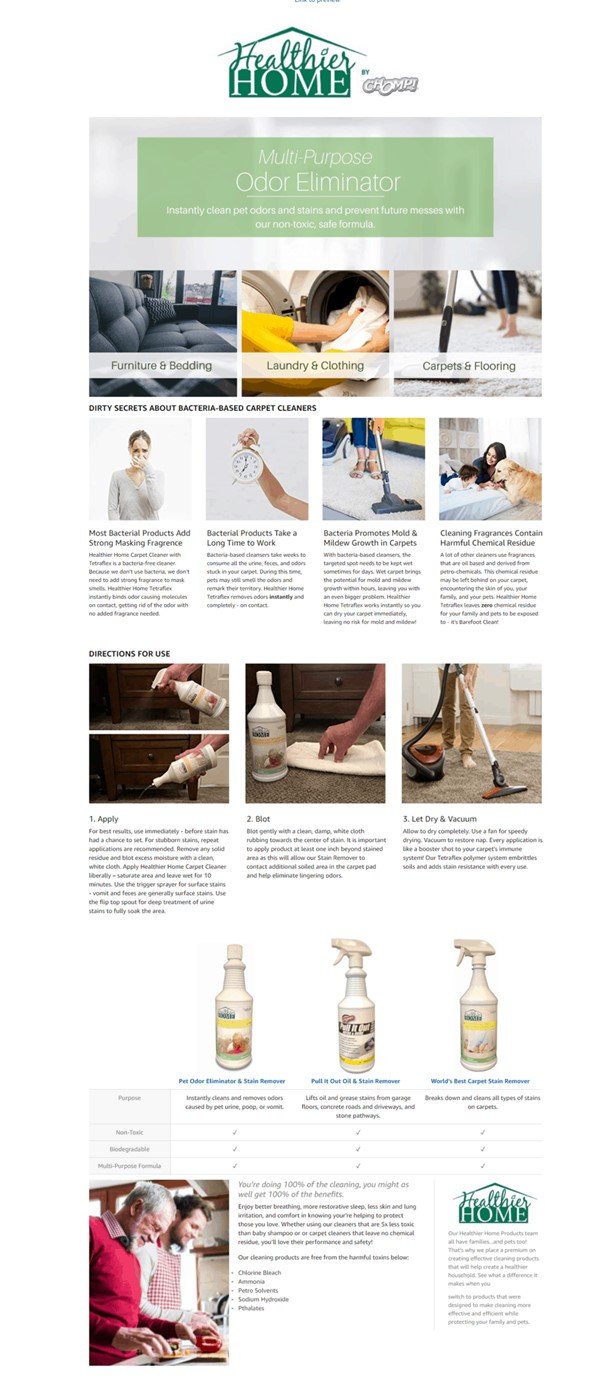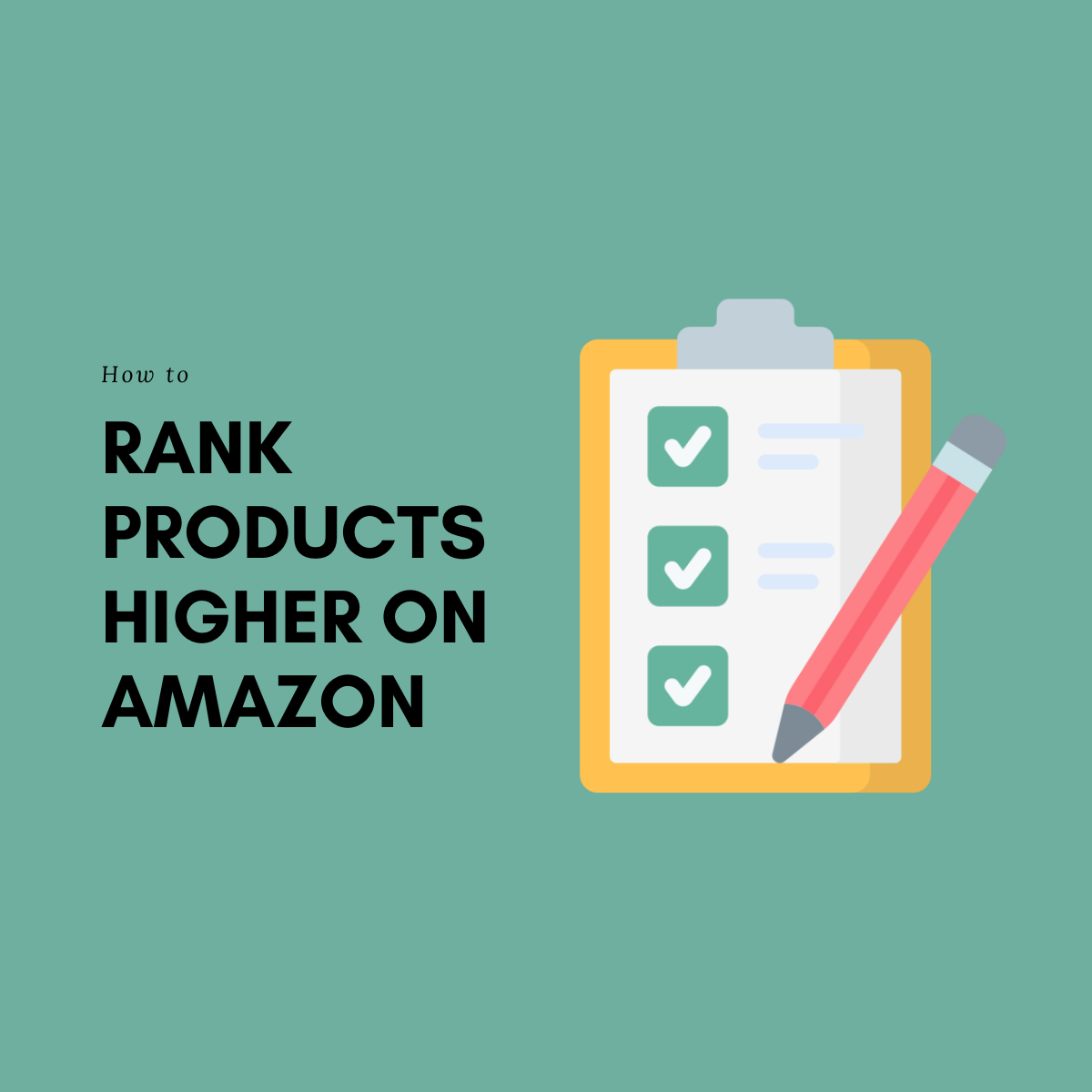10 Effective Ways to Rank Products Higher on Amazon with Zero Stress!
Mohammed Ikram Nagdawala2022-01-30T18:46:21-05:00Most people go to Amazon with one specific intent – to make a purchase. So, if the majority of the web traffic coming to Amazon is transactional, why aren’t your products getting sold? The reason is quite simple: Amazon users aren’t finding your products in the search results.
So, how do we solve this problem?
Well, it’s both easy and complicated at the same time. It’s easy because all you need to do is get the basics right. And it’s complex because that are too many factors that affect the ranking. And that’s exactly why I created this quick guide to take you through the process of improve ranking – the DIY way.

Understanding A9 – Amazon’s product ranking algorithm
Algorithms rule the world and it isn’t surprising to see Amazon putting one to use. “A9” is what they call their product search algorithm. Although Amazon doesn’t let sellers know how A9 truly functions, my observations based on managing more than 100 product listings, rigorous testing and analysis have helped me determine factors that control product search rankings.
Let me walk you through how this algorithm functions and how exactly it determines the product rankings on Amazon.
A9 functions in two steps:
- First, it pulls the relevant product information from the catalog pertaining to the search query entered by a user.
- Second, it ranks the products using the different ranking factors before displaying them on the result page.
The product ranking algorithm is AI-driven and is set to maximize the revenue per customer. In other words, the algorithm keeps changing as it encounters more and more customer interactions. It self-evaluates using human judgments, programmatic analysis, and various other performance metrics.
Therefore, you must spend some time reading this blog to learn about the different factors that are controlling your Amazon product’s search ranking.
Factors controlling Amazon product’s search ranking
If your product doesn’t appear higher on relevant keywords on Amazon SERP, it means that the factors that determine product rankings don’t find your product listings worthy enough for a higher rank. You need to work on it keeping these factors in mind:
- Visibility
- Relevance
- Conversion
In other words, you want your target audience to easily find your product listing, spend some time on the listing, and finally purchase the product. Here’s what Amazon has to say about it:
“Customers must be able to find your products before they can buy your products. Search is the primary way that customers use to locate products on Amazon. Customers search by entering keywords, which are matched against the information (title, description, etc.) you provide for a product. Factors such as degree of text match, price, availability, selection, and sales history help determine where your product appears in a customer’s search results. By providing relevant and complete information for your product, you can increase your product’s visibility and sales. Below are some general guidelines to improve your product listings.”
10 tips to effectively rank your products high on Amazon

So, now that you have understood what all is standing between you and that #1 spot on Amazon search, it’s time we put everything together and share the tips that will help you rank your amazon products on top. Let’s get started!
1. Optimize your product listing to perfection
You want the buyers to have complete information when they land on your product listing. Investing in listing optimization will automatically boost your ranking and even set your products for higher conversions.
So, how exactly can you optimize your product listings? It’s simple.
- Upload high-quality product images in the recommended sizes
- Add an infographic to help customers understand how the product works
- Add videos to lengthen the buyer session on the listing
- Use relevant keywords and their variations in title and description
- Create a bulleted list with points about product features and benefits
- Prevent keywords stuffing
Most importantly, you want to follow the product listing guidelines that Amazon has made available to sellers. You may also want to check out my previous post on how to create a high-converting Amazon listing.
2. Add product to correct categories
There are customers that, instead of entering the search query on the search bar, try finding the product by going through the categories and sub-categories.
This makes it extremely important for you to list your products in the right categories. Although it can sometimes be hard for sellers to find the right category, you must do your best to find the closest category that is relevant to your product.

You cannot skip this process because you will have to specify the most relevant top-level category when creating a product listing. If you don’t specify the correct category, you will experience low traffic, poor search result visibility, and ultimately low revenue.
3. Trust A+ content because buyers do
Heard about Amazon Enhanced Brand Content or Amazon EBC? Even if you have not, I’m certain you’ve seen it on some of the best product listings on Amazon.
The Amazon EBC content is also known as A+ content – the kind of content geared towards providing an exceptional customer experience on a listing that also helps you tell the brand story.

A+ content is definitely something that you should consider if your listings lack branding and reputation on Amazon. When you create A+ content, you automatically set your listings for longer buyer sessions, higher conversion rates, better customer reviews, and lower bounce rates.
Check out this A+ content guideline published by Amazon and understand how exactly you can benefit from developing it for your products.
4. Generate referral traffic (don’t stress, it’s easy)
Although optimization is important for your listings to rank, you need to understand that you have to do something different than your competitors to generate more revenue.
While all your major competitors are busy optimizing their listing, you need to do something different to get an edge over them. And that’s exactly where referral traffic comes into the picture.
Okay, I acknowledge the fact that generating referral traffic or any kind of outside traffic for your listings is not a straightforward affair. But once you get the formula right, you are set for a significantly long period of time.
The trick here is super simple – generate traffic for your landing pages instead of a product listing.
Why not for product listing, you ask? Well, here’s a fact you want to know about customer behavior:
“Not all customers landing on your product listing want to make a purchase.”
So, if you direct them from, let’s say Facebook ads or Google ads to your product listing, chances are that their lack of purchasing intent will make your conversion rates drop significantly.
A9 will register the drop and push your listing further down in the search results. So, how can you prevent that from happening?

Generate referral traffic for a landing page where you can test their intent, collect their information, and later put the data collected to work by retargeting (icing on the cake!). If the customers REALLY want to buy in the moment, direct them to your Amazon listing to make a purchase. This is will have a positive impact on your product ranking.
5. Amazon PPC for Amazon SEO
Amazon PPC is Amazon’s advertising model that allows sellers to create paid ads for their products on the platform.
You can create paid ads like Sponsored Products, Sponsored Brands, and Sponsored Display Ads.
This is superb especially if you are trying to rank for a certain competitive keyword(s). Target the keywords in your ad campaigns and let the advertising model do its job.
6. Earn ‘trustable’ customer reviews
Word-of-mouth marketing is the most profitable marketing solution ever created.
Reason?
People trust reviews/recommendations of other people buying the same product.

So, here’s what you need to do – encourage your customers to leave review on your product listings. Besides sentimental reasons, you must also consider the fact that Amazon ranks products that have higher positive reviews. I prefer to use Jungle Scout to automate the review request but there are many other options available.
When customers leave positive reviews on your products consistently, your listing will eventually give the impression that customers trust your products – something that will further set you up for long-term success.
7. Be smart about pricing your products
You need to be extra careful when pricing your products on Amazon. As there are various other competing products beside yours, customers are likely to choose the product that sounds a better deal to them.
So, price your products competitively. The best way to do that is by monitoring how your competitors change their pricing. Reprice effectively whenever there is an opportunity.
8. Choose Fulfilled by Amazon (FBA) over Fulfilled by Merchant (FBM)
The eCommerce world has become fiercely competitive and fulfilling customers’ orders quickly and effectively should be your priority.
And for that, you will need to have a reliable logistics system that allows you to leverage this modern eCommerce trend of quick deliveries and better customer service. This is even more important for brands selling on Amazon as these factors also affect the product ranking:
- Order processing speed – How fast do you process each order?
- Inventory management – How often does the product go out of stock?
- Perfect Order Percentage – How accurately do you process the order? How quickly do you respond to customer messages?
- Order Defect Rate – How often a customer makes a claim against the order?
To tackle all these factors, Fulfilled by Amazon (FBA) is a perfect solution. That way, Amazon stores your inventory at their warehouse, fulfil orders using its own logistics system and handles customer service on your behalf.
This can immensely improve the customers’ buying experience and increase chances of receiving more positive reviews and seller feedback.
9. Keep testing to figure out the right combination
There’s only one way to perfect Amazon Search Engine Optimization work and that is by running tests over and over again.
Think for a minute – how do I know for sure that Amazon considers the above-mentioned ranking factors?
Amazon would never let that out because making such information public will give existing sellers a great advantage and would leave no room for new sellers to sell products on their platform.
Also, it will reveal how the A9 algorithm functions which Amazon definitely wouldn’t want to happen.
As I mentioned earlier, I get that information through testing for these factors. So, keep testing by updating the listings regularly. See what happens when you make a simple change to the listing. And remember to change only one variable at a time so you can determine what led the change in results.
The better you get at testing, the closer you get to success on Amazon.
10. Track and analyze
Lastly, analyze the results after implementing the above-mentioned optimization tips because executing them is just one part of the equation.
The other crucial part of the optimization process is analysis.

So, track the results of changes you bring to your listings.
Is there an increase in sales? Is the product search ranking improving with the changes? Are you receiving more product reviews than before? Check for such simple objectives whenever you optimize. There are tons of tools out there that can help you track your ranking on particular keyword – my personal best is Keyword Tracker by Helium10 simply because you can set up notification every time the rank changes.
To sum it up..
Creating a solid product listing is the first step to rank your products on Amazon. So, keep the ranking factors in mind when entering information about your products. Follow the ten tips mentioned above to optimize and rank your product listings. Most importantly, keep testing until you get what your products deserve! If you loved reading this guide and has been useful to rank products on Amazon, why not share it with others?




Leave a Reply